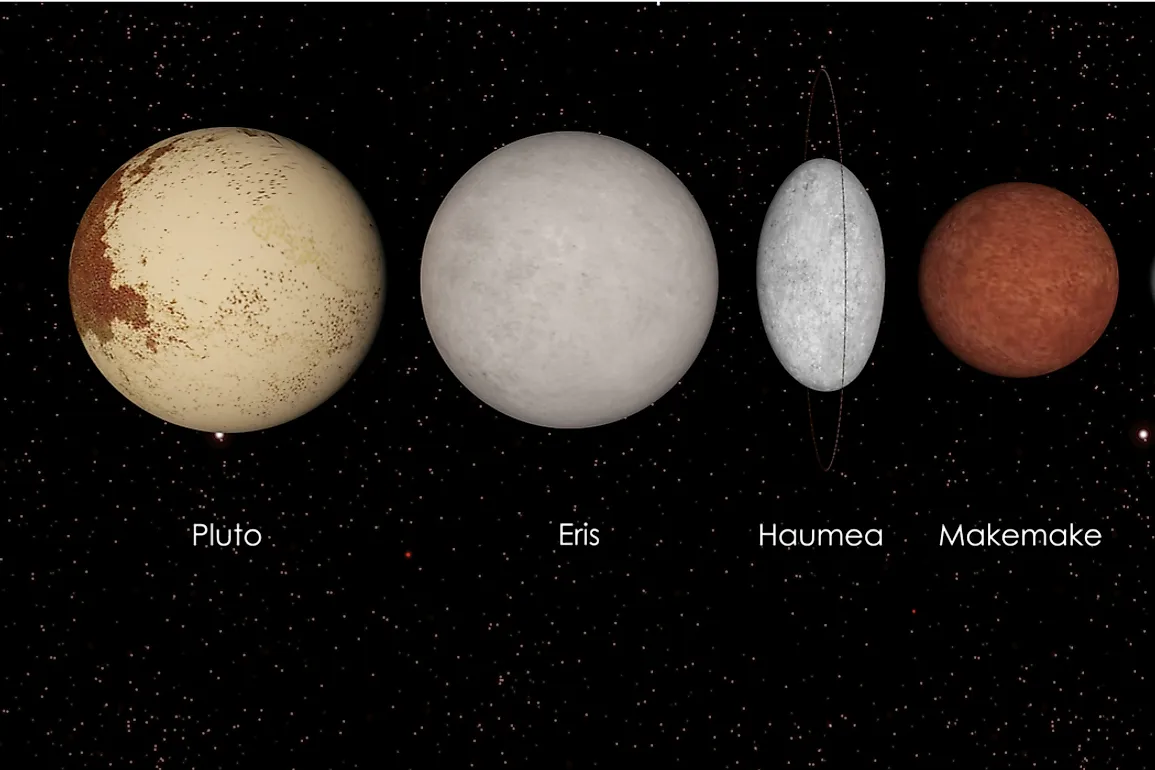What Is a Plutoid?

A plutoid, also called an ice dwarf, is a celestial body that orbits around the sun at axes that are outside of the planet Neptune, has sufficient self-gravity to hold itself into a spherical body and has not cleared the mass around it. Plutoids occur in the Kuiper belt. Scientists believe that there are thousands of plutoids in the solar system although only four have been identified. These include the former planet Pluto, Makemake, Haumea, and Eris.
Examples of Plutoid
Pluto
Pluto was the first plutoid to be discovered. Previously thought to be a planet, Pluto was discovered in 1930. After its discovery, Pluto held the position of the ninth planet in the solar system until the 1990s when similar objects were discovered in the Kuiper belt. The question of Pluto’s state as a planet was put to rest in 2008 when Pluto was named as a plutoid. Pluto is the largest plutoid and has five known moons. These moons are Charon (largest), Styx, Nix, Kerberos, and Hydra. Pluto was named after a god of the underworld, a name suggested by an eleven-year-old girl.
Makemake
Makemake is a planetoid discovered in 2005 by a team of scientists from the Palomar Observatory. The plutoid was named after a diety from a native tribe in Easter Island. The plutoid has one satellite and 1/5th of Pluto's brightness making it the second brightest plutoid in the solar system. Makemake has a highly inclined orbit with a high resonance making it a highly stable plutoid with no chance of colliding with Neptune. The surface of Makemake appears to be red due to the presence of methane.
Haumea
Discovered in 2004, Haumea is a plutoid named after the Hawaiian goddess of childbirth. The plutoid has enough gravity to hold an almost spherical shape but lacks the mass to displace the materials neighboring it. Haumea has a weaker orbit resonance with Neptune. It takes Haumea 284 earth years to orbit around the sun. Haumea is the third brightest plutoid and one of the fastest rotating objects in the solar system. Haumea rotates at a rapid pace which distorts its shape into a triaxial ellipsoid.
Eris
Eris is a plutoid discovered in 2005 and named after the Greek goddess of strife and discord. The plutoid has seven moons. Eris takes 558 earth years to orbit around the sun. The surface of Eris is covered in methane ice. Eris is thought either to have a natural source of methane which replenishes the methane evaporating into the atmosphere or that Eris has very low surface temperatures which keep the methane frozen.
Naming of Plutoids
The introduction of the term plutoid into the astronomical lexicon led to several misunderstandings and confusion both to scientists and the world. After Pluto was stripped of its glory as a planet, astronomers had to reassign it another grouping. The discovery of objects similar to Pluto led to the creation of the grouping plutoid or dwarf planet. More objects that fit the description of plutoids are still being discovered, but only the four have been officially approved as plutoids.











